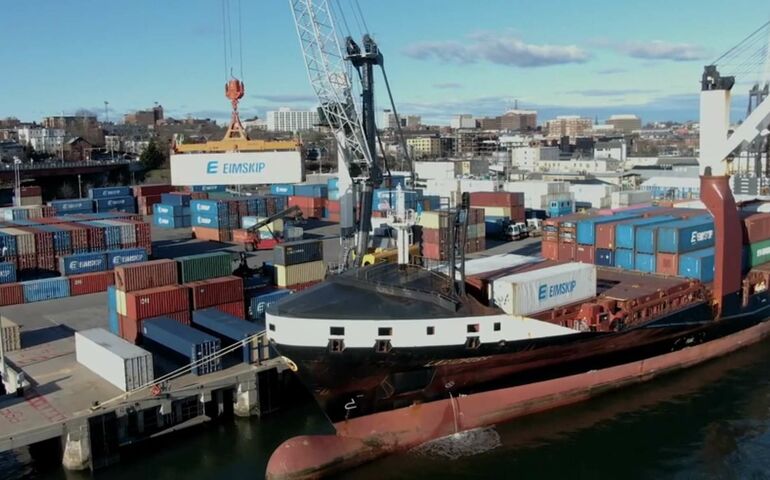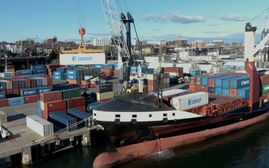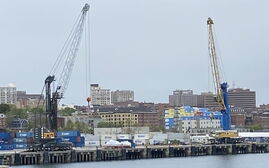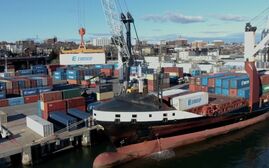Container shipping falters at world's largest ports, but Portland bucks trend
 COURTESY / SOLI DG
The Maine Port Authority this year took over management of the International Marine Terminal in Portland, shown here, where shipping volume remains steady despite a decline at larger ports.
COURTESY / SOLI DG
The Maine Port Authority this year took over management of the International Marine Terminal in Portland, shown here, where shipping volume remains steady despite a decline at larger ports.
The volume of container shipping has recently been on a decrease in most U.S. and European ports. But Portland bucked the trend last year, with growth of 4% to 5%.
More growth is expected this year, according to a news release, with shipments totaling 45,000 twenty-foot equivalent container units, or TEUs, passing through Maine's only container port.
Portland has seen steady growth in cargo carried by Eimskip, a 100-year-old shipping company based in Reykjavik, Iceland. In 2013, Eimskip moved the U.S. port of call for its vessels to Portland from Norfolk, Va., and has been operating out of Portland's International Marine Terminal.
Eimskip travels to a variety of international markets and has seen consistent volume and direct service to Europe, including imports of fresh salmon from Iceland and the Faroe Islands.
Portland's capacity for handling such goods should also get a boost soon. A $55 million, 107,000-square-foot cold-storage warehouse on the city's waterfront is headed toward completion next February, and could take the port and the state to a higher level in the realm of international trade.
In contrast, larger U.S. and European container ports saw a continued decline in this year's first quarter, as retail imports continued to remain sluggish.
Total container volume at the top 13 North American ports fell by 20% year-over-year to 12.3 million TEUs.
Houston was the only large port with increased container volume in Q1, up by 3.4% year-over-year due to increased exports. Los Angeles had the biggest decrease, down by 32%.
Total West Coast container volume fell by 24% and East Coast volume was down by 18%.
In both the U.S. and Europe, rising interest rates, high inflation and less consumer spending have contributed to the drops in container volume. The war in Ukraine has also continued to wreak havoc on supply chains and logistics.













0 Comments